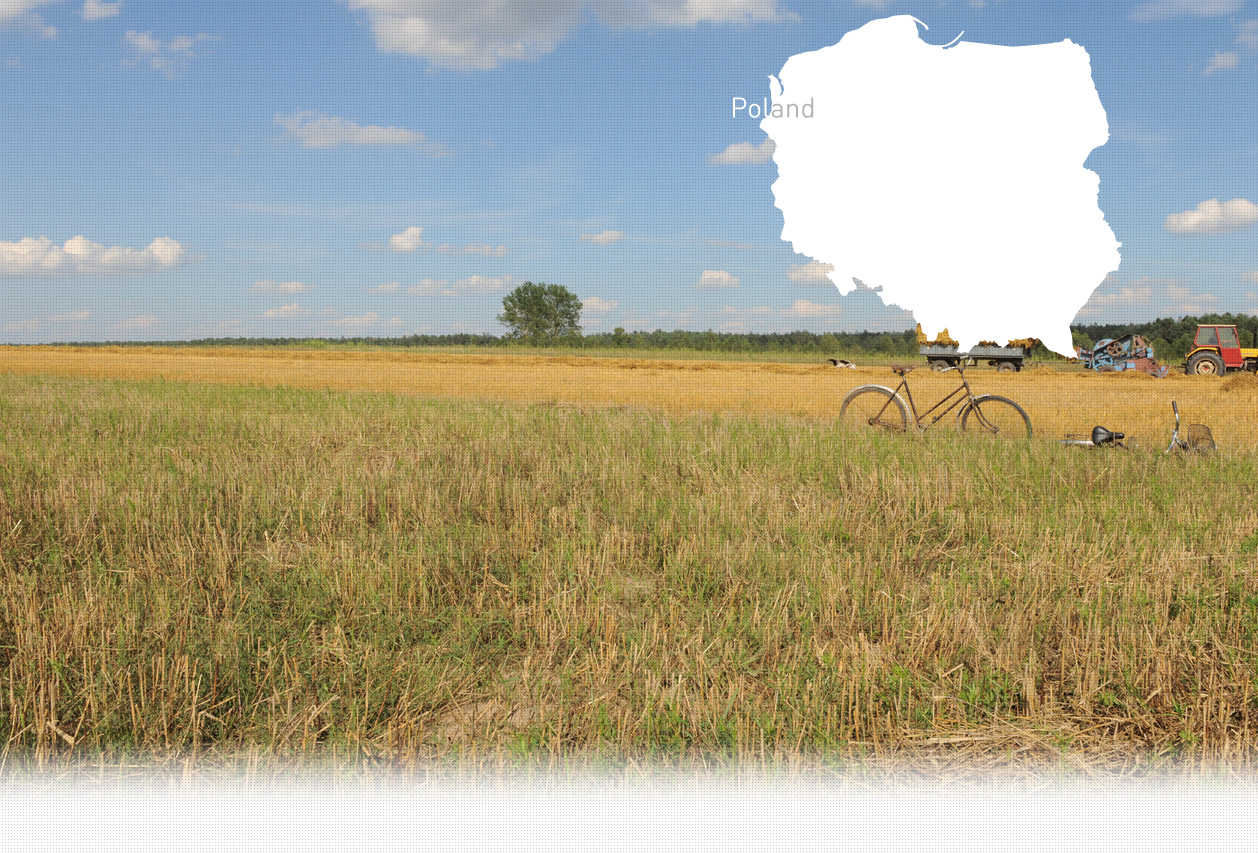

1 Sitio(s) de ejecución
Kazimierz P., born in 1935: "There were no Jews in Zamostek, but there were many in Gorzków and Izbica. Jews from Gorzków were brought to Zamostek by a gendarme and shot. We heard shots. I don't know who buried the bodies, but I know where they are. It's in this field, for a long time when I came here with my father, we could make out the outline of the pit after the wheat had grown over it." [Testimony N°YIU1469P, interviewed in Zamostek, on August 21, 2023]
"Questionnaire on Mass Killings and Mass Graves
1. Date and place of killing: August 28, 1942, Gorzków, Krasnystaw county.
2. Method of killing/shooting, hanging or other: Shooting.
3. Details of victims killed:
- Number of people executed: 13 victims
-Origin of victims: Jews either expelled from their homes in Gorzków, or expellees from Lodz.
- Names, ages, professions and addresses: unknown
4. Do we know what the victims were accused of, or was the killing an order of reprisal or other? No
5. Who carried out the execution: Gendarmerie
6. Are the names of the perpetrators known? No
7. Were the bodies burned? Or destroyed in some other way?
8. Where were they buried? In the field behind the Catholic cemetery.
9. Description of the grave: 3x4 m.
10. Was the grave exhumed? No."
[IPN GK 163/13, p.278; Questionnaire on Mass Executions and Mass Graves in the Lubelskie Province, Districts: Krasnystaw. Based on the testimony of Jan Czaplinski, 44 years old, resident of Chorupnik collected on December 12, 1945]
Gorzków is a village in Krasnystaw County in eastern Poland. It lies approximately 14 km (9 miles) south-west of Krasnystaw and 47 km (29 miles) south-east of the regional capital Lublin.
It is likely that the first Jews settled In Gorzków shortly after the foundation of the town in the 1690s, however the earliest records mentioning Jews in Gorzków date from the 19th century. The local Jewish population was mainly engaged in trade and crafts. During the 19th century the Jewish population grew steadily. In 1862 Gorzków had 378 inhabitants, of which 218 were Jews (57%), while in 1877 the 467 Jews residents represented 66% of the 705 inhabitants.
Even if there was no independent Jewish community in Gorzków and the local Jews were subordinated to the Kehilla in Krasnystaw, they however owned a stone synagogue, or a beth midrash, as well as a cemetery and a mikveh. In 1921 the town had 691 inhabitants, of whom 434 were Jews (62%). The Jewish political life underwent a revival in the 1920s, when a Bund cell was established in Gorzków. It led the educational and cultural association "League".
The exact number of the Jewish residents living in Gorzków on the eve of the WWII remains unknown, but it is certain that in the 1930s the Jewish population of Gorzków slowly declined due to the difficult economic situation and the rise of anti-Semitic sentiments, which pushed the local Jews to emigrate to larger cities.
Gorzków was first occupied by the Germans, before the Soviet troops took over the district and withdrew in early October 1939, leaving the village to the Germans again. Some Jews managed then to evacuate with the Soviets.
At the beginning of 1940, the Germans authorities established in Gorzków a Judenrat, chaired by Izrael Edelstein. An open ghetto was also created to house several hundreds Jewish expellees from Słupce, Konin, Szubin, Łódź (about 500 people between October and December 1939) and those arrived in May 1941 from Krasnystaw. In mid-March 1942, about 1,000 Czech and Slovak Jews were transferred to Gorzków from Izbica. The life conditions in the overcrowded Gorzkόw ghetto were very harsh, leading the local Judernat to request in March 1942 an urgency help from the Jewish Self-Help Committee in Lublin.
On May 13 or 14, 1942, about 1,000 Jews from Gorzków, together with Jews from nearby Turobin, Wysokie, and Zolkiewka, were deported via Krasnystaw to the Sobibor death camp. A local witness remembers that a large column of Jews, including men, women and children, was gathered in the village and sent on foot to Krasnystaw. On the way, the deportees were guarded by Polish police and Ukrainian auxiliaries from Trawniki. Those who fell or stumbled were killed on the spot. The next day, after attending Krasnystaw, the deportees were sent to Sobibor death camp. A new deportation of about 200 Jews from Gorzków to Sobibor took place in June 1942.
According to Polish archives and local witnesses interviewed by Yahad-In Unum, on August 28, 1942, a group of 12-13 Jewish men was led by a gendarme to a field near the Catholic cemetery in Zamostek and shot there with a machine gun. The bodies of the victims were buried on the spot and remain at the site, which is still not commemorated today. In addition to this shooting, isolated killings also took place in Gorzków. A Yahad witness saw the bodies of two Jewish women, a mother and daughter, killed in their house by a German. Presumably, their bodies were then buried in the Jewish cemetery of Chorupnik. Another witness remembers that a Gestapo officer from Izbica regularly came to Gorzków specifically to kill Jews, causing a number of Jewish victims.
¿Tiene información adicional con respecto a un pueblo que le gustaría compartir con Yahad?
Por favor contáctenos a contact@yahadinunum.org
o llamando a Yahad – In Unum at +33 (0) 1 53 20 13 17